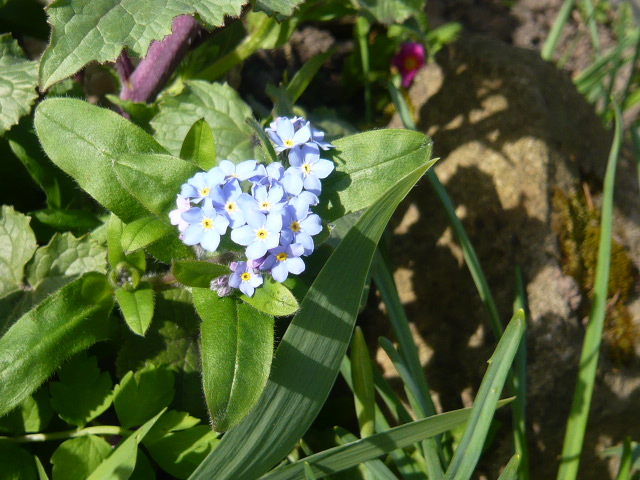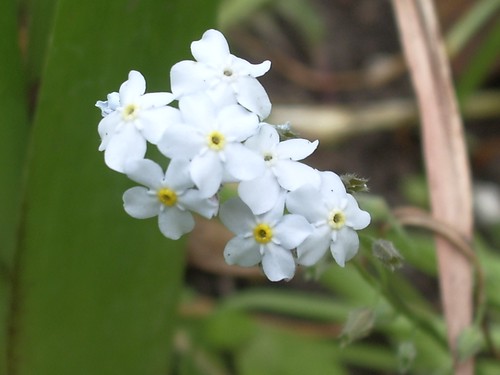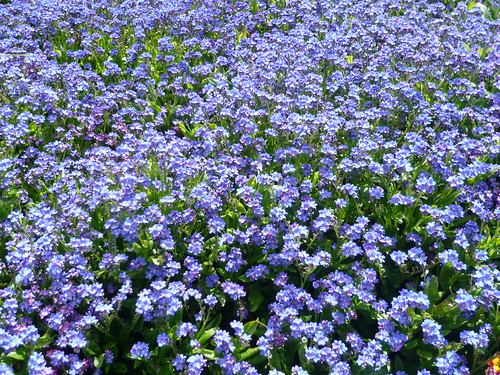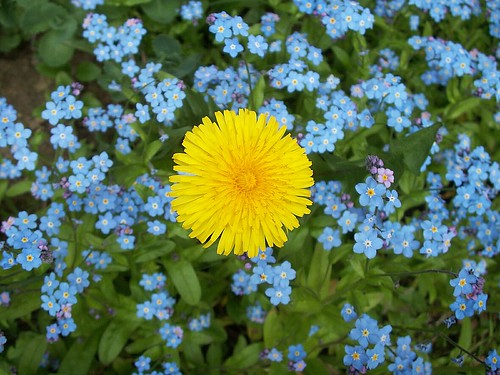
Tips for Growing Forget-Me-Nots
Forget-me-not Cultivation and Growing Tips
- These plants are very easy to grow from seed. Sow one year and they flower the next because most varieties are biennials.
- Forget-me-nots are usually blue but are also found in pink and white and shades of blue.
- Forget-me-nots are dwarf, compact plants upto a foot tall! A fantastic addition to spring beds and borders.
- The plants complement golden Daffodils yellow Wallflowers and Primulas.
- Sow May -June and thin out. Plants self sow all over my garden so clear out any invaders.
- Plants can also be purchase to avoid the problems of sowing your own.
- Naturalised flowers become less spectacular – renew with seed every few years. Try a stronger strain.
Forget-me-not Common Names and Varieties to Consider
- Myosotis is the Latin name for Forget-me-nots. It is a family of 50 species. See main varieties at the foot of this page
- Historically it got the name ‘mouse ears’ due to the shape of its leaves.
- Varieties to look out for include Ultramarine and Blue ball or for Alpine Forget-me-nots ‘Ruth Fisher’.
Unusual Facts about Forget-me-nots
- Newfoundland in Canada used the Forget-me-not as a symbol of remembrance of that nation’s war dead.
- Germans and Freemasons use forget-me-nots as a symbol not to forget the poor and desperate. (Germany may need a good crop with the economy in such a state.)
Old & Odd Tips From Gardeners Tips on Forget-me-nots
- Plant in drifts around the edge of ponds.
- Pull up and compost plants as they finish flowering – you will still get lots of seedlings.
- Use forget-me-nots as a cut flower when in bud to prolong vase life.
Horticultural Sources and Advice on Forget-me-not
- You can often obtain seeds or plants from our mail order company of choice Thompson & Morgan
- Powdery mildew can be a problem in dry soil. Pull up and destroy infected plants.
- Species include; Myosotis alpestris – Alpine Forget-me-not
Myosotis arvensis – Field Forget-me-not
Myosotis asiatica – Asiatic Forget-me-not
Myosotis azorica – Azores Forget-me-not
Myosotis caespitosa – Tufted Forget-me-not
Myosotis discolor – Changing Forget-me-not
Myosotis latifolia – Broadleaf Forget-me-not
Myosotis laxa – Tufted Forget-me-not, Bay Forget-me-not
Myosotis scorpioides – True Forget-me-not
Myosotis secunda – Creeping Forget-me-not
Myosotis sicula – Jersey Forget-me-not
Myosotis sylvatica – Wood Forget-me-not
Myosotis verna – Spring Forget-me-not

Credits
forget-me-nots by Mags CC BY-NC-SA 2.0
Dandelion and Forget-me-nots (1) by Purrrpl_Haze CC BY-NC-ND 2.0
Flowers from my granny’s garden by sermoa CC BY-SA 2.0



2 thoughts on “Tips for Growing Forget-Me-Nots”
Forget-me-nots really have a special name. It carries the same message in other languages, like Vergissmeinnicht in German. It’s also chosen as the symbol of the 100th anniversary of the Armenian Genocide of remembrance of the 1.5 million killed by the Ottoman Turks in the Armenian Genocide.
But did you know that forget-me-nots can be invasive? Like many other beautiful flowers, this little blue blossom can invade gardens just like a weed. There are gardeners that grow it very carefully, otherwise it will take over their yards. You can read more about it here:
https://www.rebelmouse.com/Desiree_Thomson/weeds-disguised-as-flowers-1140805380.html
Comments are closed.